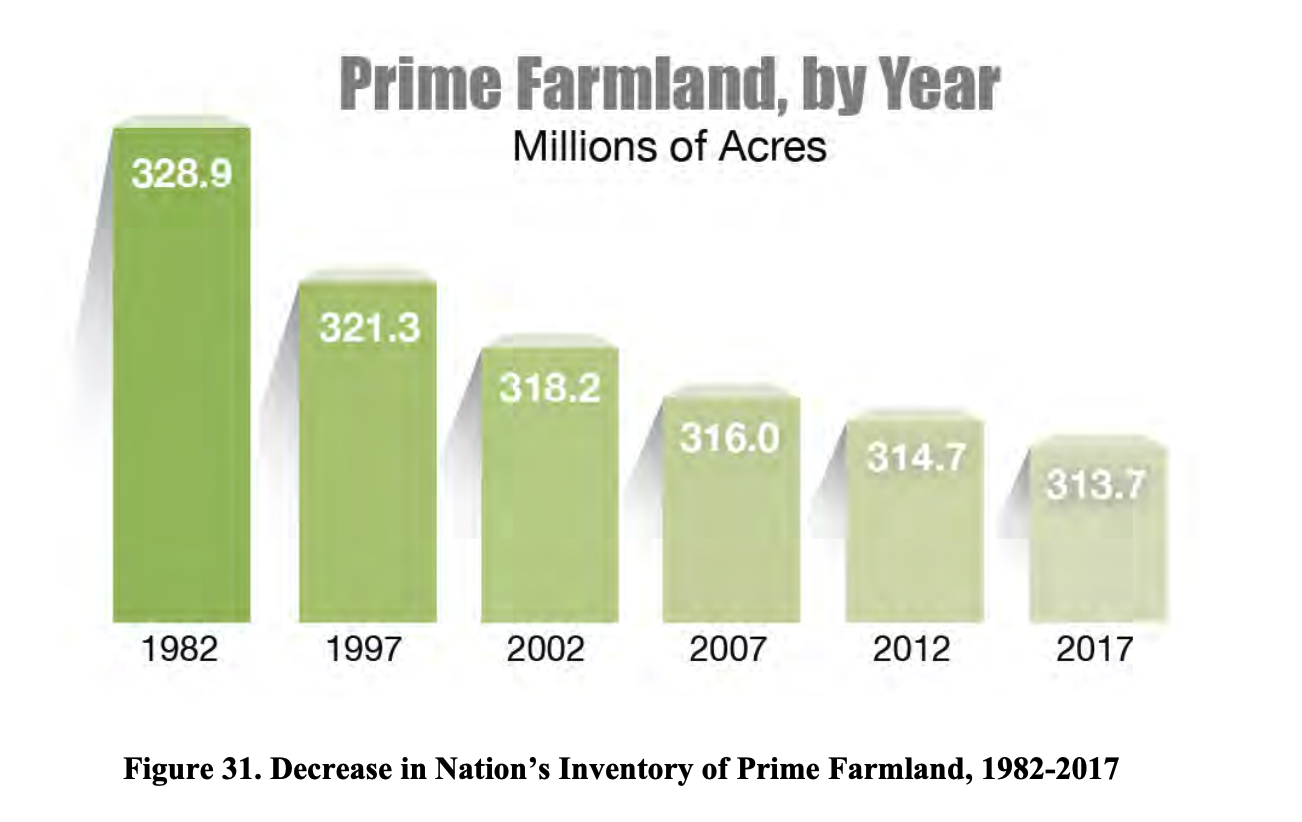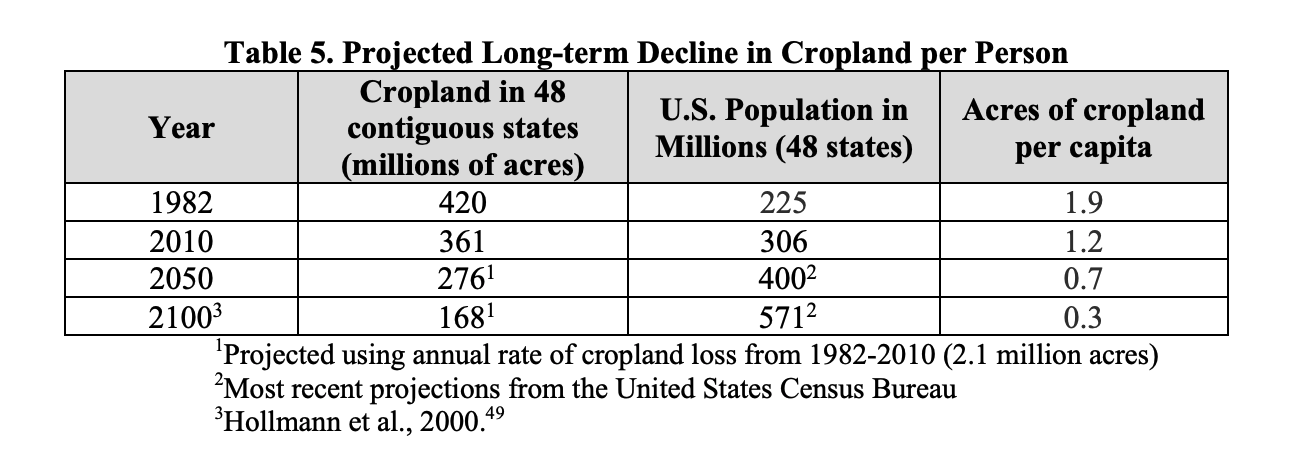National security involves many things, including domestic food security. That is becoming increasingly more difficult as immigration policy is driven by the premise that the United States needs to add as many people as possible as fast as possible.
Immigration policy reforms are needed to stabilize U.S. population growth and safeguard national security. And that involves internal threats as much as external.
What comes to mind when we think of national security? Military defense? Foreign affairs? What about internal conditions such as the United States’ continued ability to produce enough food for a domestic population that is growing rapidly, primarily from immigration?
Americans are losing agricultural land to development and conversion for other uses. This stands to significantly impact the availability and quality of land left for growing food. This is happening even as we add over 1.5 million new people to feed every year from immigration alone.
NumbersUSA’s National Sprawl Study found that from 2002-2017:
67% of rural land loss was related to POPULATION GROWTH: About 11,950 square miles of rural land were developed to handle the additional [food and material] consumption needs caused by the U.S. population having 37 million more people in 2017 than in 2002.”
While population growth slowed some, especially between 2019-2021, and likely due to the effects of the pandemic and lower fertility rates, the study emphasizes nonetheless that:
“Immigration rates increased rapidly in 2021”
And:
Even if the loss of habitat and farmland continues at the lower rate of the 2002-2017 period, the average destruction of 1,200 square miles per year would be unsustainable for a country that desires the continued capability of food independence and stewardship of the animal and plant life currently living within its borders.”
Summarizing the full impact of loss of land to development alone, the study found that:
116,303,000 acres of land — 181,723 square miles — in the United States had been developed. This is an area nearly 20,000 square miles larger than the state of California”
Let’s take a more specific look now at how much farmland and cropland was lost either to development or for other purposes. (Understanding loss of agricultural land is complex in part because “loss” is also due to changes in soil quality conditions and conversion for uses other than food production).
Consider the effects and consequences of the following on food security and what that may mean for our ability to retain our position globally as a food exporter and especially our ability to continue producing enough food for Americans.

Important to note as shown in the graph below, only 65% of Prime Farmland is used to grow crops.
Table 5 from the national study shows the decline in cropland per capita from 1982 and projected into 2100 (assuming population growth would remain at the same rate as it is currently):

To close, NumbersUSA’s Scientific Director & co-author of the National Sprawl Study Leon Kolanckiewicz, summarizes well some of the potential national security implications of the loss of croplands and farmlands in the U.S.:
Ominous, divergent trends – an increasing population, a decreasing arable land base, diversions of water supplies needed for irrigated agriculture to urban populations, and a modern, mechanized agriculture that is heavily dependent on limited fossil fuels at all stages – have led some scientists to conclude that someday within this century the United States may cease to be a net food exporter. Food grown in this country would be needed for domestic consumption. By mid-century, the ratio of arable land per capita may have dropped to the point that, “the diet of the average American will, of necessity, include more grains, legumes, tubers, fruits and vegetables, and significantly less animal products.” While this may in fact constitute a healthier diet, it would also represent a significant loss of choice for a country that has always prided itself on its abundant agriculture, plentiful consumer options, and comparative freedom from want.”
CHRISTY SHAW is the Member Services Manager for NumbersUSA
Take Action
Your voice counts! Let your Member of Congress know where you stand on immigration issues through the Action Board. Not a NumbersUSA member? Sign up here to get started.
Donate Today!
NumbersUSA is a non-profit, non-partisan organization that relies on your donations to works toward sensible immigration policies. NumbersUSA Education & Research Foundation is recognized by America's Best Charities as one of the top 3% of well-run charities.
Immigration Grade Cards
NumbersUSA provides the only comprehensive immigration grade cards. See how your member of Congress’ rates and find grades going back to the 104th Congress (1995-97).